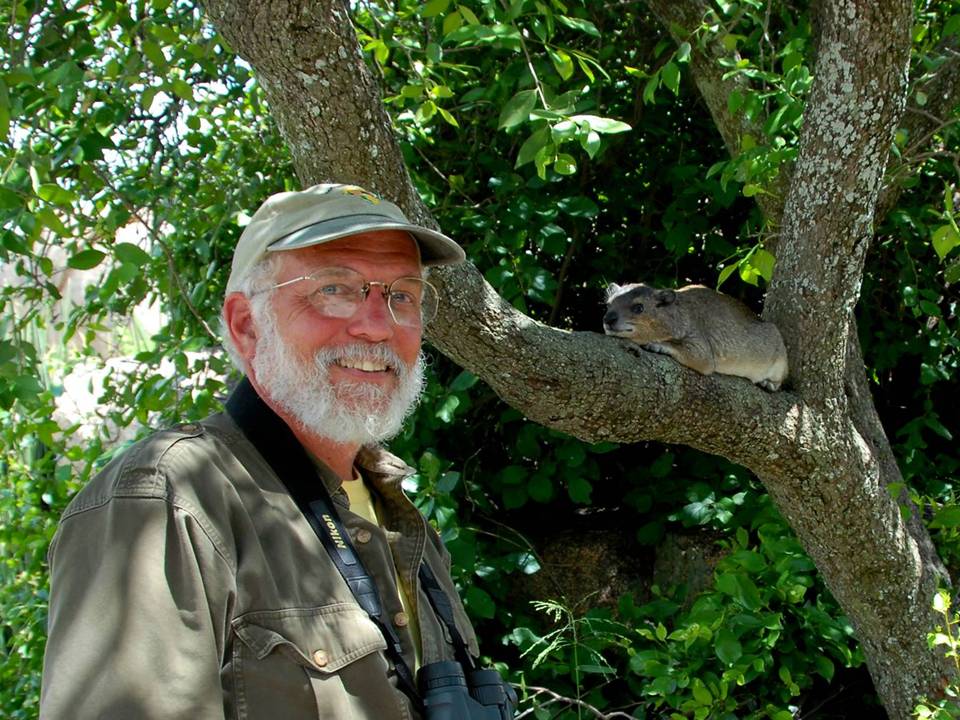EE Program Faculty
Kerry Foresman
Professor Emeritus
Contact
- Office
- HS 203
- Phone
- (406) 243-4492
- foresman@mso.umt.edu
- Website
- http://cas.umt.edu/dbs/labs/foresman/
Education
B.A. University of Montana, 1971
M.S. University of Idaho, 1973
Ph.D. University of Idaho, 1977
Courses Taught
Mammalogy, Developmental Biology, Field Techniques in Mammalogy
Research Interests
My primary interests concern the ecology and reproductive biology of the mustelids, soricids, and chiropterans. Together with my graduate students, I am conducting research on many species classified as sensitive, rare, threatened, or endangered by various federal and state agencies. We are working closely with the National Forest Service and the Montana Department of Fish, Wildlife & Parks on studies which serve as the foundation for conservation efforts relative to these species. At the moment, ecological and distributional studies are being conducted on several species of shrews in Montana. My graduate students and I have recently finished ecological studies on marten and fisher. Research projects on black-tailed prairie dog ecology as well as plague prevalence in small mammal populations in north central Montana have also been completed. Our attention has now turned to demographic studies on the porcupine.
My lab has developed survey protocols for the Forest Service for the detection and ultimate monitoring of mid-level forest carnivores, specifically marten, fisher, wolverine, and lynx. This research is on-going; our current focus is on habitat fragmentation concerns and corridor use as well as developing the statistical framework for species detection.
I am also interested in using fluctuating asymmetry as a means of studying the effects of environmental stress on developmental stability and speciation using shrews as a model system.
We have also recently completed studies on the effects of highway development on fragmentation of small mammal populations and ways to mitigate such effects through the use of modified culverts, funded by Montana Department of Transportation, and a large study addressing wildlife corridor use across the Thompson River drainage, with Federal Department of Transportation funding.
I completed a comprehensive text, "The Wild Mammals of Montana" (www.mammalsociety.org) , and field guide, "Key to the Mammals of Montana" (www.onlinemontana.com) on the mammals of this state.
For a much more detailed description of our studies please refer to my personal lab web page identified above.
Selected Publications
Foresman, K. R., and D. E. Pearson. 1998. Comparison of proposed survey procedures for the detection of forest carnivores. J. Wildl. Manage. 62:1217-1226.
Foresman, K. R., and D. E. Pearson. 1999. Activity patterns of American Martens, Martes americana, Snowshoe Hares, Lepus americanus, and Red Squirrels, Tamiasciurus hudsonicus, in westcentral Montana. The Can. Field-Nat. 113(3):386-389.
Naughton, G. P., C. B. Henderson, K. R. Foresman, and R. L. McGraw II. 2000. Long-toed salamanders (Ambystoma macrodactylum) in harvested and intact Douglas-fir forests of western Montana. Ecol. Appl. 10:1681-1689.
Badyaev, A.V., K. R. Foresman, and M.V. Fernandes. 2000. Rapid environmental change and developmental stability: vegetation removal causes increased fluctuating asymmetry in free-living shrew populations. Ecology 81:336-345.
Badyaev, A. V. and K. R. Foresman. 2000. Extreme environmental change and evolution: stress-induced morphological variation is strongly concordant with patterns of evolutionary divergence in shrew mandibles. Proc. R. Soc. Lond. B 267:371-377.
Foresman, K. R. 2001. The Wild Mammals of Montana. Special Publication #12, The American Society of Mammalogists, 278 pp.
Foresman, K. R. 2001. Key to the Mammals of Montana. The University of Montana Bookstore, 92 pp.
Foresman, K. R. Small mammal use of modified culverts on the Lolo South Project of western Montana. Proc. Int. Conf. Ecol. Trans., Keystone, CO, 2001; Raleigh, N.C., Center for Transportation and the Environment, North Carolina State University; In Press.
Badyaev, A., and K. R. Foresman . 2004. Evolution of morphological integration. I. Functional units channel stress-induced variation in shrew mandibles. The American Naturalist, 163:868-879.
Gillihan, S. W., and K. R. Foresman. 2004. Sorex vagrans. Mammalian Species No.744:1-5., American Society of Mammalogists.
Foresman, K. R., and A. V. Badyaev. 2006. Developmental instability and the environment: why are some species better indicators of stress than others. In: Merritt, J. F., S. Churchfield, R. Hutterer, and B. A. Sheftel. (eds.). Advances in the biology of the shrews II. Special Publication of the International Society of Shrew Biologists No. 01.
Badyaev, A. V., Kerry R. Foresman, and Rebecca L. Young. 2005. Evolution of morphological integration: II. Developmental accommodation of stress-induced variation. American Naturalist 166:382-395.
Dullum, J. L. D., K. R. Foresman, and M. R. Matchett. 2005. Efficacy of translocations for restoring populations of black-tailed prairie dogs. Wildlife Society Bulletin 33:842-950.
Vinkey, R. S., M. K. Schwartz, K. S. McKelvey, K. R. Foresman, K. L. Pilgrim, and B. J. Giddings. 2006. When reintroductions are augmentations: the genetic legacy of the fisher (Martes pennanti) in Montana. Journal of Mammalogy 87:265-271.
Holmes, G. E., K. R. Foresman, and M. R. Matchett. 2006. No evidence of persistent Yersinia pestis infection at prairie dog colonies in north-central Montana. Wildlife Diseases 42:164-169.
Ausband, D., and K. R. Foresman. 2007. Assessing the success of swift fox reintroductions on the Blackfeet Indian reservation, Montana, USA. Biological Conservation 136:423-430.
Ausband D., and K. R. Foresman. 2007. Dispersal, survival, and reproduction of wild-born, yearling swift foxes in a reintroduced population. Canadian Journal of Zoology 85:185-189.
Zwolak, R., and K. R. Foresman. 2007. Effects of a stand-replacing fire on small mammal communities in montane forest. Canadian Journal of Zoology 85:815-822.
Luikart, G., S. Zundel, D. Rioux, C. Miquel, K. A. Keating, J. T. Hogg, B. Steele, K. R. Foresman, and P. Taberlet. 2008. Low genotyping error rates for microsatellite mutiplexes and noninvasive fecal DNA samples from bighorn sheep. Journal of Wildlife Management 72:299-304.
Zwolak, R., and K. R. Foresman. 2008. Deer mouse demography in burned and unburned forest: no evidence for source-sink dynamics. Canadian Journal of Zoology 86:83-91.

